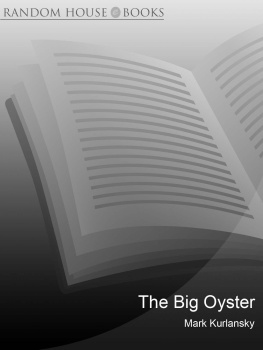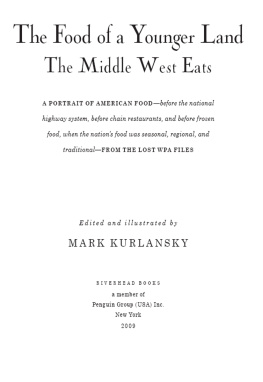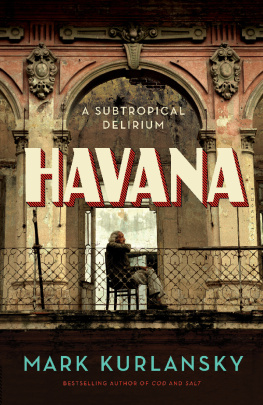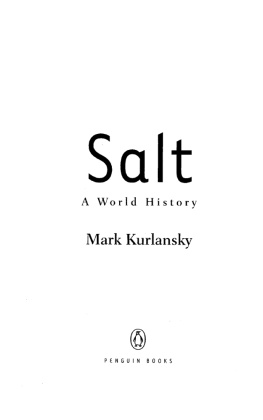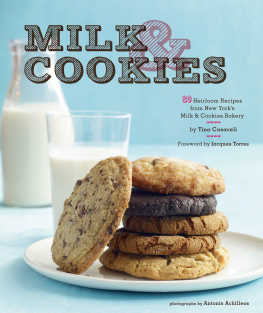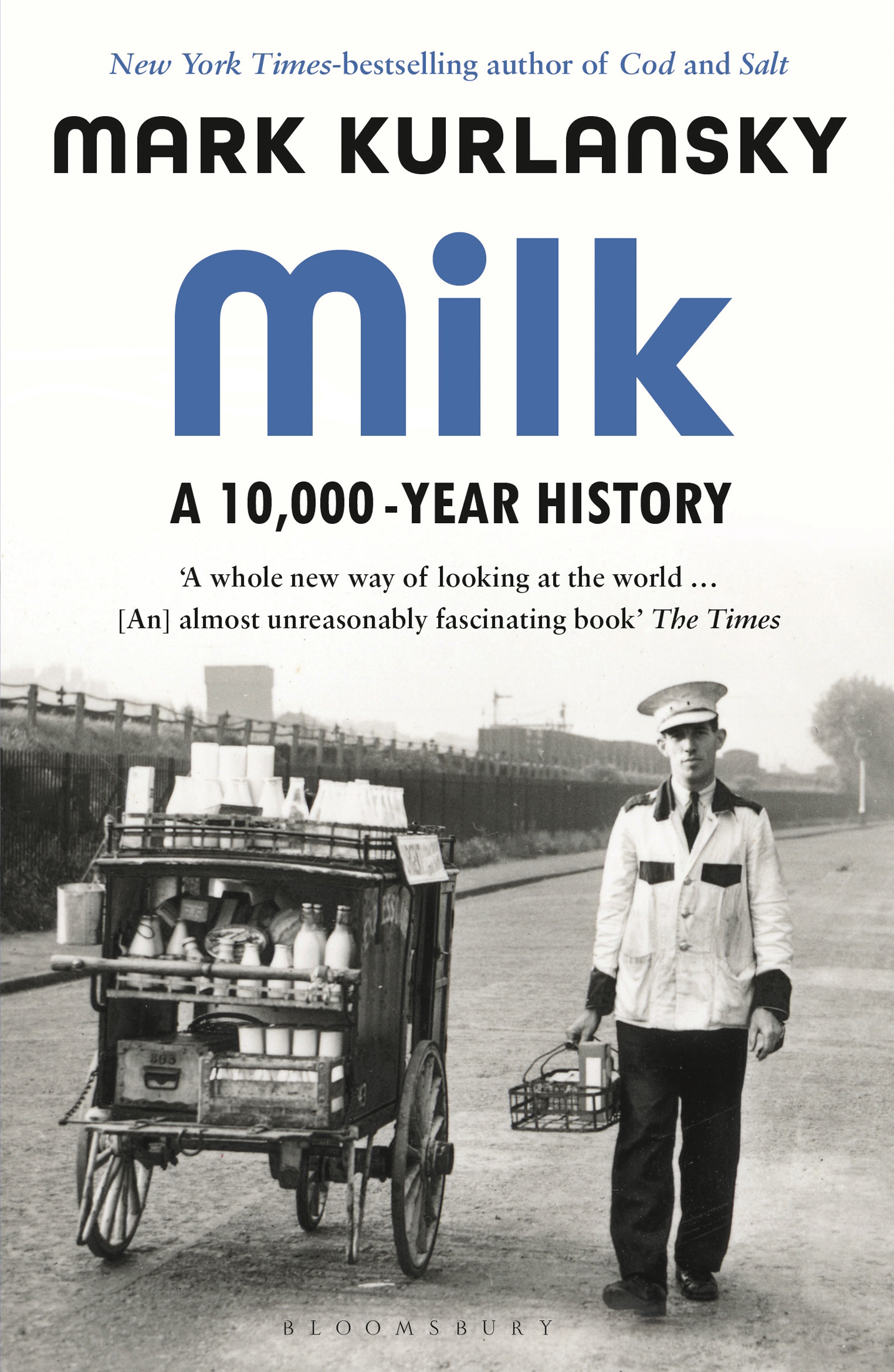Contents
Guide
Pagebreaks of the print version
To my dear friend Charlotte Sheedy,
one of the finest people I have ever known
BY THE SAME AUTHOR
NONFICTION
Havana: A Subtropical Delirium
Paper: Paging through History
International Night: A Father and Daughter Cook Their Way around the World
Ready for a Brand New Beat: How Dancing in the Street Became the Anthem for a Changing America
Birdseye: The Adventures of a Curious Man
Hank Greenberg: The Hero Who Didnt Want to Be One
What? Are These the 20 Most Important Questions in Human Historyor Is This a Game of 20 Questions?
The Eastern Stars: How Baseball Changed the Dominican Town of San Pedro de Macoris
The Food of a Younger Land: A Portrait of American Food from the Lost WPA Files
The Last Fish Tale: The Fate of the Atlantic and Survival in Gloucester, Americas Oldest Fishing Port and Most Original Town
The Big Oyster: History on the Half Shell
Nonviolence: A History of a Dangerous Idea
1968: The Year that Rocked the World
Choice Cuts: A Savory Selection of Food Writing from Around the World and Throughout History
Salt: A World History
The Basque History of the World
Cod: A Biography of the Fish That Changed the World
A Chosen Few: The Resurrection of European Jewry
A Continent of Islands: Searching for the Caribbean Destiny
FICTION
City Beasts: Fourteen Stories of Uninvited Wildlife
Edible Stories: A Novel in Sixteen Parts
The Belly of Paris by mile Zola: A New Translation with an Introduction by Mark Kurlansky
Boogaloo on 2nd Avenue: A Novel of Pastry, Guilt, and Music
The White Man in the Tree and Other Stories
CHILDREN/YOUNG ADULT
Frozen in Time: Clarence Birdseyes Outrageous Idea about Frozen Food
Battle Fatigue
World without Fish
The Story of Salt
The Girl Who Swam to Euskadi
The Cods Tale




CONTENTS
How sad that we have no memories of our mothers milk or our first sight of the world, through eyes made blurry by the tears we shed for milk
SAIT FAIK ABASIYANIK, Milk
Si vous n tes pas capable dun peu dalch mie, ce nest pas la peine de vous mettre en cuisine .
If you are not capable of a bit of alchemy, dont bother going into the kitchen.
COLETTE
I often include recipes in my books, not because of some suppressed desire to write cookbooks, but because I believe recipes to be invaluable artifacts. They teach us about societies and the social order in which they were created. They tell us what life was like at the time when those dishes were first cooked. I usually have not concerned myself with whether the recipe will result in a pleasing dish.
However, in researching this book, I came across so many dairy dishes to choose from that I decided to select ones that would be enjoyable to eat. And so I encourage the reader to try some of these recipes. That said, I would avoid Richard Nixons cottage cheese recipe, milk water, or some of the baby formulas. Milk toast never appealed to me, either. But cream pancakes and junket, syllabub and posset are voices from the past worth trying. Indian pudding, ginger ice cream, a hot strawberry sundae, Jamaican banana ice cream, or especially Pellegrino Artusis caff latte gelato could make your day. Do try Louis Diats glorious original recipe for vichyssoise. And there are many others, such as the Indian recipes from what is possibly the greatest dairy cuisine.
I always included the original recipes without updating them, though I have slipped in a few explanations [between brackets], as some of the recipes, particularly the older ones, are a bit vague and hard to follow. One of those is the recipe for Catos cheesecake, which many have tried to clarify, but no one seems to know exactly how it is supposed to turn out. That means that your version is as valid as the next. Feel free to make adjustments, create, and use modern tools such as a stove and an ice cream maker. The best dishes are often those to which the chef adds a personal statement, even when using a very old recipe. As Colette said, use a little alchemy.
He curdled half the milk and set it aside in wicker strainers, but the other half he poured into bowls that he might drink it for his supper.
ODYSSEUS , observing the Cyclops in Homers The Odyssey
S ince milk is a food and this book contains 126 recipes, it might seem as if this should be a food book. But milk is a food with a historyit has been argued about for at least the past ten thousand years. It is the most argued-over food in human history, which is why it was the first food to find its way into a modern scientific laboratory and why it is the most regulated of all foods.
People have argued over the importance of breastfeeding, the proper role of mothers, the healthful versus unhealthful qualities of milk, the best sources of milk, farming practices, animal rights, raw versus pasteurized milk, the safety of raw milk cheese, the proper role of government, the organic food movement, hormones, genetically modified crops, and more.
Here is a food fight that gourmets, chefs, agronomists, parents, feminists, chemists, epidemiologists, nutritionists, biologists, economists, and animal lovers can all weigh in on.
One great misconception about milk is that people who cannot drink it have something wrong with them. In truth, the aberrant condition is being able to drink milk. Milk drinkers are mostly of European extraction, and as we are living in a Eurocentric world, we tend to think of consuming dairy products as a normal thing to dosomething that is forgone in some regions only because of a malady known as lactose intolerance. But lactose intolerance is the natural condition of all mammals. Humans are the only mammals that consume milk past weaning, apparently in defiance of a basic rule of nature. In nature, the babies of most mammals nurse only until they are ready for food, and then a gene steps in to shut down the ability to digest milk. Lactose, a sugar in milk, is digestible only when lactase, a genetically controlled enzyme, is present in the intestines. Almost everyone is born with lactase. Without it, a baby could not breastfeed. But as most babies get older, a gene cuts off the production of lactase and they can no longer consume milk.
But something went wrong with Europeansas well as Middle Easterners, North Africans, and people from the Indian subcontinent. They lack the gene and so continue to produce lactase and consume milk into adulthood.
The gene travels in blood-related tribes and family groups. So though most black Africans are lactose-intolerant, the Masai, who are cattle herders, are not. Those who are intolerant tend not to have dairy in their culture. But in societies that do adopt a dairy culture, such as the Masai or Indians in Asia, the ability to digest milk remains. The early Europeans had dairy cultures and so were lactose-tolerant, though this was truer in the north, where short growing seasons necessitated a supplemental food source. However, being lactose-tolerant certainly is not entirely a question of climate, because the original Americansoccupying two continents stretching from Patagonia to Alaska and including just about every imaginable climatewere lactose-intolerant.


